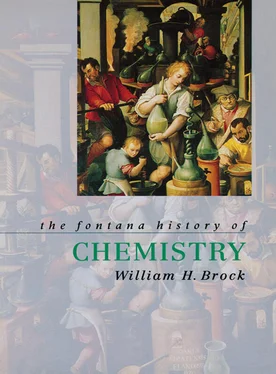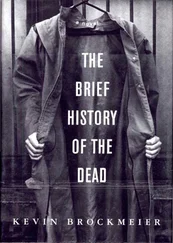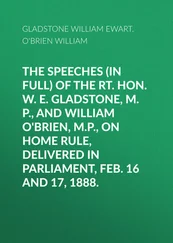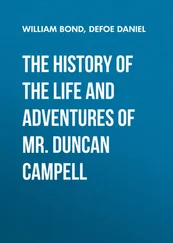The historian’s reply has usually been a negative one, with the rider that chemistry developed much later than either astronomy or physics or anatomy and physiology; and that chemistry did not become a science until the eighteenth century. Its revolution was carried out by Lavoisier.
Whether or not this was the case, it can be agreed that chemistry presented the early natural philosopher with peculiarly difficult problems. The sheer complexity of most of the chemical materials with which chemists commonly worked can be seen, with hindsight, to have inevitably made generalizations extremely difficult. Chemists were considering with equal ardour the chemical components of the human and animal body, and of plants and minerals, the procedures of metallurgy, pottery, vinegar, acid and glass manufacture, as well as, in some quarters, abstractions like the philosopher’s stone and the elixir of life. There was no universally agreed chemical language, no convenient compartmentalization of substances into organic and inorganic, into solids, liquids and gases, or into acids, bases and salts; and no concept of purity. For example, when Wilhelm Homberg (1652–1715) ‘analysed’ ordinary sulphur in 1703, he obtained an acid salt, an earth, some fatty matter and some copper metal.
But perhaps the greatest stumbling block to the further development of chemistry was a case of insufficient analysis – there was a complete absence of a knowledge or concept of the gaseous state of matter. Chemistry remained a two-dimensional science, which studied, and only had equipment and apparatus to handle, solids and liquids.
This does not mean that chemistry lacked organization, for there were any number of grand theories that brought order and classification to this complicated subject. The problem with these organizational theories was not only their mutual inconsistency, but the fact that by the 1660s they looked old-fashioned and part of the pre-revolutionary landscape that astronomers and physicists had moved away from. To many natural philosophers, therefore, chemistry seemed tainted; it was an occult or pseudo-science that was beyond the pale of rational discourse.
This was where Boyle came in, for he devoted his life to bringing chemistry to the attention of natural philosophers as a subject worthy of their closest and honest attention. His intention was to ‘begat a good understanding betwixt the chymists and the mechanical philosophers’. In order to do this, he had to show, among other things, that the three or four traditional explanations of chemical phenomena lacked credibility and that a better explanation lay in the revived corpuscular philosophy.
Philippus Aureolus Theophrastus Bombast von Hohenheim (1493–1541), who rechristened himself Paracelsus in order to indicate his superiority to the second-century Roman medical writer, Celsus, was born near Zurich, then still nominally part of the Holy Roman empire and under Austrian domination. At the age of twenty-one, on the advice of his physician father, he visited the mines and metallurgical workshops in the Tyrol where he studied metallurgy and alchemy. After claiming a medical degree from Ferrara in Italy, Paracelsus became Medical Officer of Health at Basel, a position he was forced to leave in an undignified manner two years later after his abusive and bombastic manner had offended public opinion. Thereafter, he became a rolling stone, restlessly traversing the roads and countries of war-torn Europe, associating with physicians, alchemists, astrologers, apothecaries, miners, gypsies and the adepts of the occult.
It is easy to see why he offended. Not only did he lecture in German instead of Latin, an unorthodox behaviour for a physician, but he publicly burned the works of Galen and Avicenna to show his contempt for orthodox medical opinion – a ceremony that was to be repeated by Lavoisier and his wife 250 years later.
If your physicians only knew that their prince Galen … was sticking in Hell, from whence he has sent letters to me, they would make the sign of the cross upon themselves with a fox’s tail. In the same way your Avicenna sits in the vestible of the infernal portal.
Come then and listen, impostors who prevail only by the authority of your high positions! After my death, my disciples will burst forth and drag you to the light, and shall expose your dirty drugs, wherewith up to this time you have compassed the death of princes .… Woe for your necks on the day of judgement! I know that the monarchy will be mine. Mine too will be the honour and the glory. Not that I praise myself: Nature praises me.
Is this rhetoric or the ravings of a lunatic?
Not surprisingly, contemporary estimates of Paracelsus varied tremendously. An opinion that ‘he lived like a pig, looked like a drover, found his greatest enjoyment in the company of the most dissolute and lowest rabble, and throughout his glorious life he was generally drunk’, may be contrasted with his pupils’ expressions, ‘the noble and beloved monarch’, ‘the German Hermes’ and ‘our dear Preceptor and King of Arts’. What did this contradictory, bewildering figure do for chemistry? What did he teach?
Most of his writings were only published posthumously and there has always been controversy between historians who accept only the ‘rational’ writings as genuine and those who view his eclectic mixture of rationalism, empiricism, Neoplatonic occultism and mysticism as the genuine Paracelsus. Although he definitely subscribed to alchemy, i.e. to the doctrine of transmutation, ‘alchemy’ had a wider meaning for Paracelsus. It entailed carrying ‘to its end something that [had] not yet been completed’. It was any process in Nature in which substances worked or metamorphosed to a new end, and thus included cookery and the chemical arts as well as physiological processes such as digestion.
This widened sense of the word was to be reflected explicitly in what has been described as the first chemistry textbook, the Alchemia published by the Lutheran humanist, Andreas Libavius (1540–1616), in 1597, though, as we shall see, Libavius was contemptuous of Paracelsus. For Paracelsus, chemistry was the key subject for unveiling the secrets of a universe that had been created by a chemist and operated by chemical laws. The views of Aristotle and Galen were those of heathens and heretics and had to be replaced by an empiricism that was controlled by Christian and Neoplatonic insights. Paracelsus and his followers, such as Ostwald Croll in his ‘royal chemistry’, the Basilica Chymica (1609), often made much of the story of creation in Genesis, which they interpreted as a chemical allegory. Paracelsianism thereby came to share many of the attributes of esoteric alchemy in which ‘the art’ was essentially a personal religious avocation.
On the other hand, Paracelsus saw himself essentially as a medical reformer, as someone destined to refute age-old teachings and to base medical practice on what he claimed were more effective mineral medicines. He taught that the principal aim of medicine should be the preparation of arcana , most of which turn out to be chemical, inorganic remedies as opposed to the herbal, organic medicines derived from Greco-Roman medicine. The arcana would destroy and eliminate poisons produced by disease, which itself was due to the putrefaction of the ‘excrements’ produced in any ‘chemical’ process. Diseases were therefore specific, as the new pandemic of syphilis then sweeping Europe suggested, and were to be cured by specific arcana.
Paracelsus taught that macrocosm (the heavens) and microcosm (the earth and all its creatures) were linked together. The heavens contained both visible and invisible stars ( astra ) that descended to impregnate the matter of the microcosm, conferring on each body the specific form and properties that directed its growth and development. Like acted upon like. The task of the chemist was, by experiment and knowledge of macrocosmic – microcosmic correspondences (the doctrine of signatures), to determine an astral essence or specific virtue capable of treating a disease. To isolate the remedy, the alchemist-physician had to separate the pure essence from the impure, by fire and distillation. Here, Paracelsus owed much to the medieval technology of distillers and to the writings of John of Rupescissa in the fourteenth century. The latter had identified Aristotle’s fifth, heavenly element, the ether, as a quintessence that could be distilled from plants. Paracelsus and his followers were, however, rather more interested in the inorganic salts remaining after distillation than in the distillates themselves.
Читать дальше












